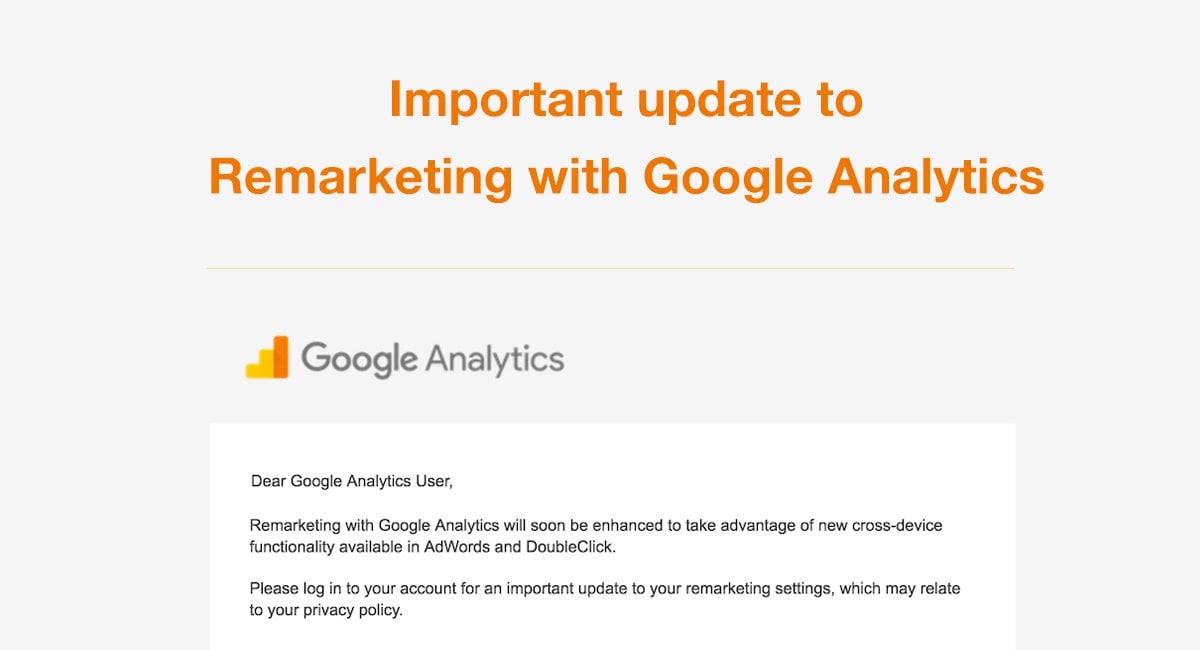Harnessing Remarketing in Google Analytics: A Comprehensive Guide
Harnessing remarketing in Google Analytics offers companies a calculated edge in getting to out to potential customers. This guide will certainly shed light on the essential steps included in harnessing the complete possibility of remarketing in Google Analytics, leading to enhanced advertising outcomes.
Comprehending Remarketing in Google Analytics
Remarketing in Google Analytics allows organizations to purposefully target customers that have actually previously communicated with their web site or mobile app. By leveraging data from Google Analytics, businesses can produce customized remarketing listings based upon user actions, such as web pages seen, actions taken, or certain objectives achieved. This effective tool enables companies to re-engage with customers that have shown interest in their solutions or items, eventually increasing the likelihood of conversion.
Understanding the different sorts of remarketing strategies is important for a successful project - What Is “Remarketing” In Google Analytics?. Google Analytics provides different alternatives, including conventional remarketing, vibrant remarketing, and remarketing listings for search advertisements (RLSA) Each kind serves an one-of-a-kind function and can be customized to satisfy particular advertising purposes
Furthermore, assessing the efficiency of remarketing campaigns is crucial for optimizing results. Google Analytics supplies useful insights right into the performance of different remarketing techniques, allowing services to make data-driven decisions and improve their targeting technique. By continuously readjusting and monitoring remarketing initiatives based upon analytics data, organizations can maximize ROI and drive success in their advertising and marketing campaigns.
Establishing Remarketing Campaigns

After setting up target market listings, the following step is to connect Google Analytics with Google Ads. By connecting these two systems, companies can flawlessly move audience lists from Google Analytics to Google Advertisements for remarketing objectives. This assimilation permits more exact targeting and far better project performance.
Once the accounts are connected, companies can create remarketing campaigns in Google Ads making use of the target market lists formerly defined in Google Analytics. These campaigns can be customized with details advertisement creatives, messaging, and bidding strategies to effectively re-engage with past site visitors and drive conversions. By following these steps, organizations can leverage the power of remarketing to improve their advertising efforts and enhance ROI.
Making Use Of Audience Segmentation Approaches

Predefined segments in Google Analytics enable you to quickly examine common audience groups like brand-new customers, returning individuals, or customers who completed a details goal on your site. Customized sections, on the Resources various other hand, allow you to develop unique sections based upon details standards that are essential to your company purposes. Dynamic remarketing lists instantly change based upon individual habits, revealing customized advertisements to individuals that have interacted with your website in particular means.
Studying Remarketing Performance Metrics
Upon assessing the efficiency of remarketing projects in Google Analytics, the analysis of essential efficiency metrics gives beneficial understandings right into target market interaction and conversion rates. By diving right into metrics such as click-through rates (CTR), conversion prices, expense per acquisition (CPA), and return on ad invest (ROAS), marketing professionals can assess the success of their remarketing efforts. Assessing these metrics makes it possible for marketing professionals to enhance projects, fine-tune audience targeting, and designate budget plans efficiently to improve overall remarketing performance.
Enhancing Remarketing Strategies
When refining remarketing strategies in Google Analytics, concentrating on audience segmentation is critical for achieving project success. By dividing your audience right into specific sectors based on their habits, demographics, or passions, you can tailor your ads extra effectively to every group. This targeted technique increases the likelihood of involving users that have currently revealed rate of interest in your products or services, causing greater conversion prices.
An additional crucial aspect of optimizing remarketing methods is constantly screening and refining your campaigns (What Is “Remarketing” In Google Analytics?). A/B screening different advertisement creatives, messaging, or deals can aid you look at this web-site identify what resonates best with your target market and drives the most conversions. By assessing the efficiency of these examinations in Google Analytics, you can make data-driven choices to enhance your remarketing initiatives even more
Furthermore, leveraging dynamic remarketing can dramatically boost your project results. This attribute permits you to reveal tailored ads to individuals based on their past interactions with your website, showcasing services or products they have actually previously seen. By delivering customized content to customers based on their behaviors and passions, vibrant remarketing can help raise interaction and drive conversions.
Verdict
Finally, taking advantage of remarketing in Google Analytics is a tactical method to target customers that have actually formerly engaged with a site. By creating personalized target market lists and utilizing audience division approaches, services can maximize remarketing projects for raised conversion prices. Evaluating efficiency metrics and continually maximizing methods are vital for taking full advantage of the performance of remarketing efforts.
Google Analytics supplies various alternatives, consisting of standard remarketing, dynamic remarketing, and remarketing lists for search advertisements (RLSA)After establishing up audience lists, the next action is to link Google Analytics with Google Advertisements. By linking these two systems, services can flawlessly move target market lists from Google Analytics to Google Ads for remarketing functions.Once the accounts are linked, companies can create remarketing projects in Google Ads using the audience notes formerly specified in Google Analytics.When refining remarketing techniques in Google Analytics, concentrating on audience division is vital for attaining project success.
Comments on “Maximizing Your ROI with Remarketing In Google Analytics”